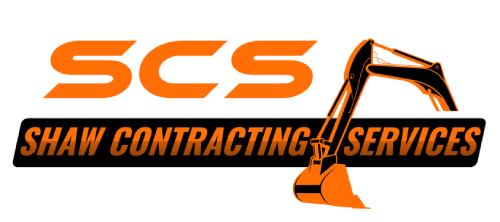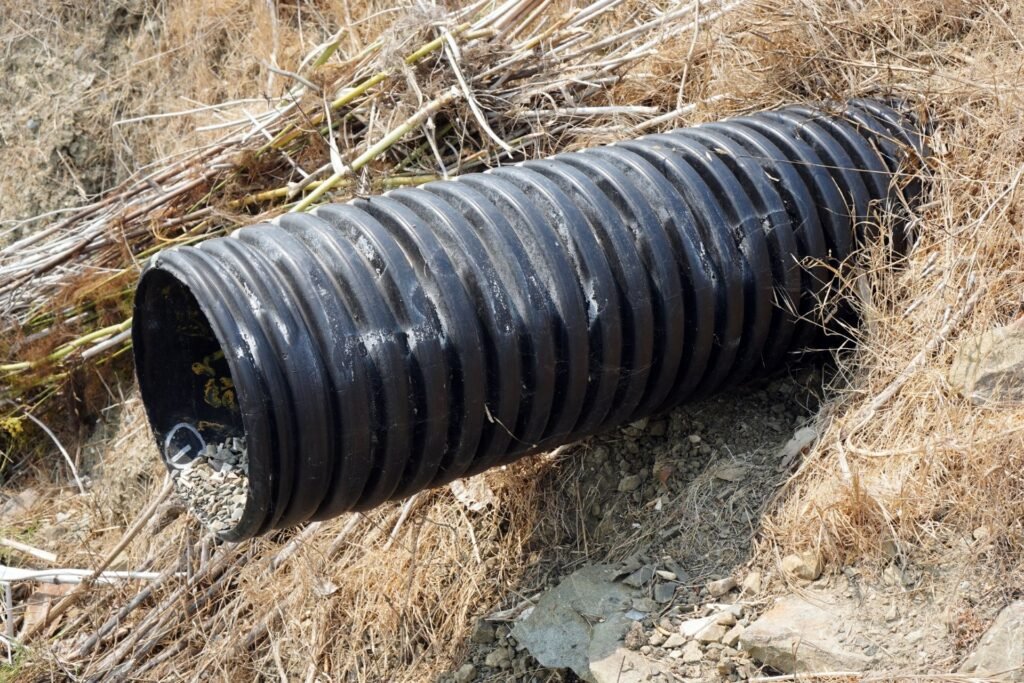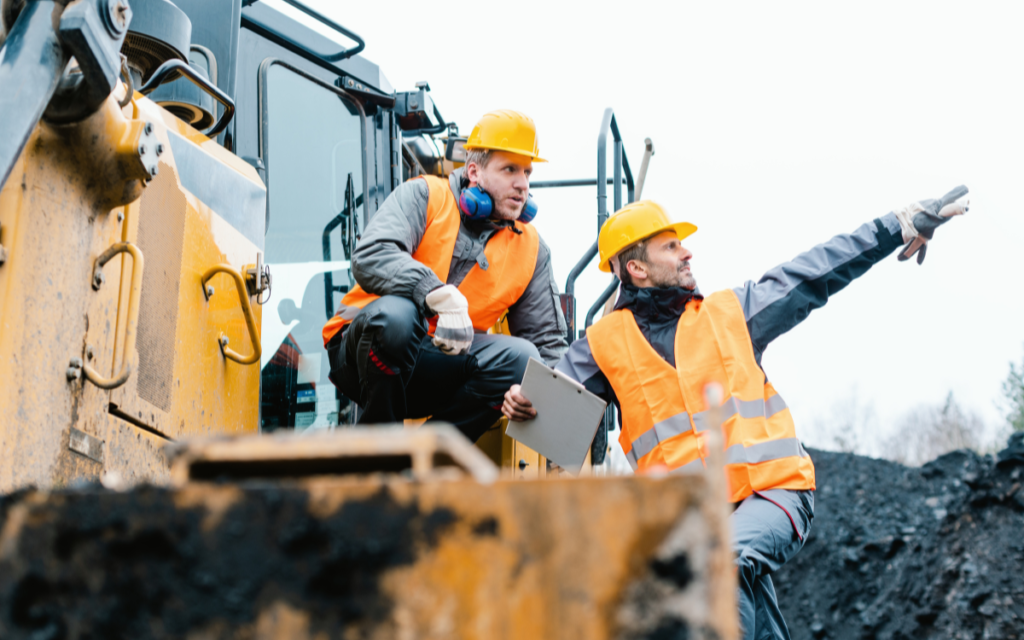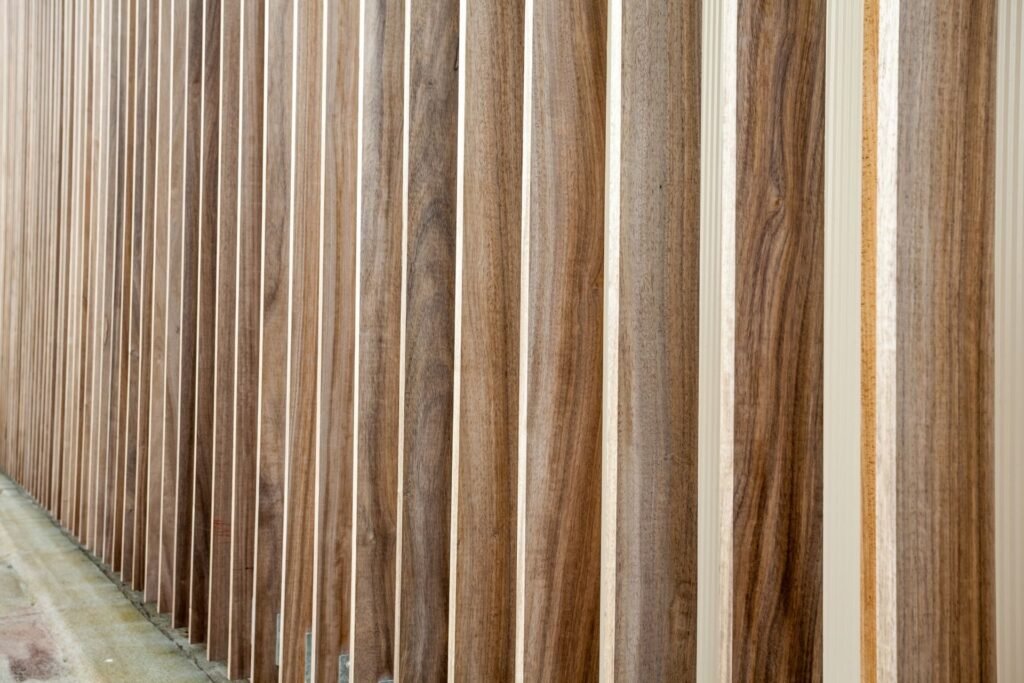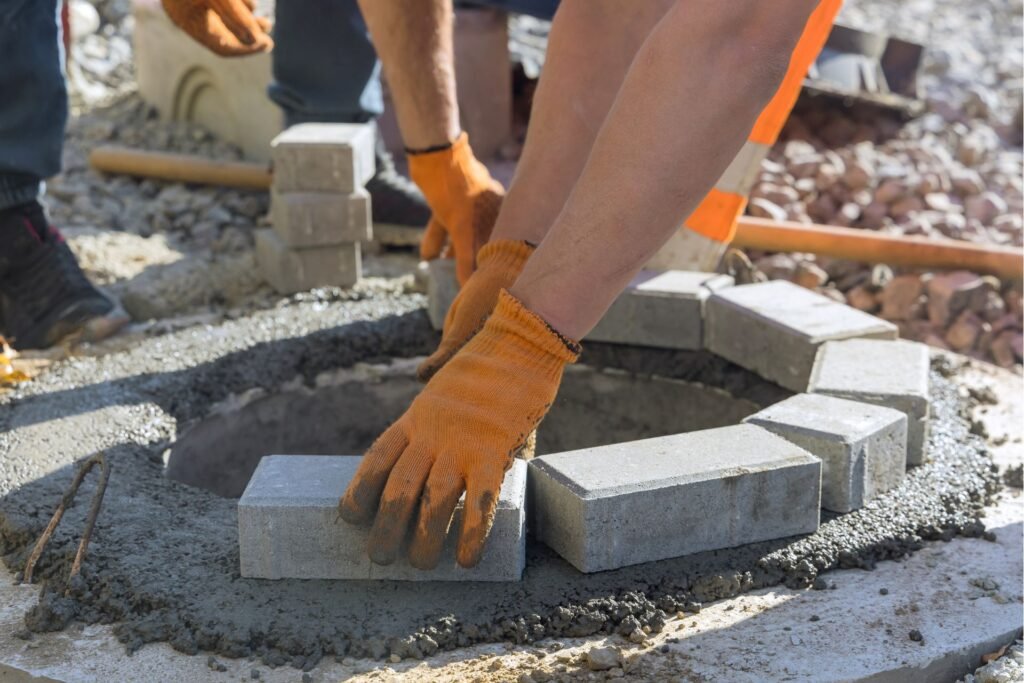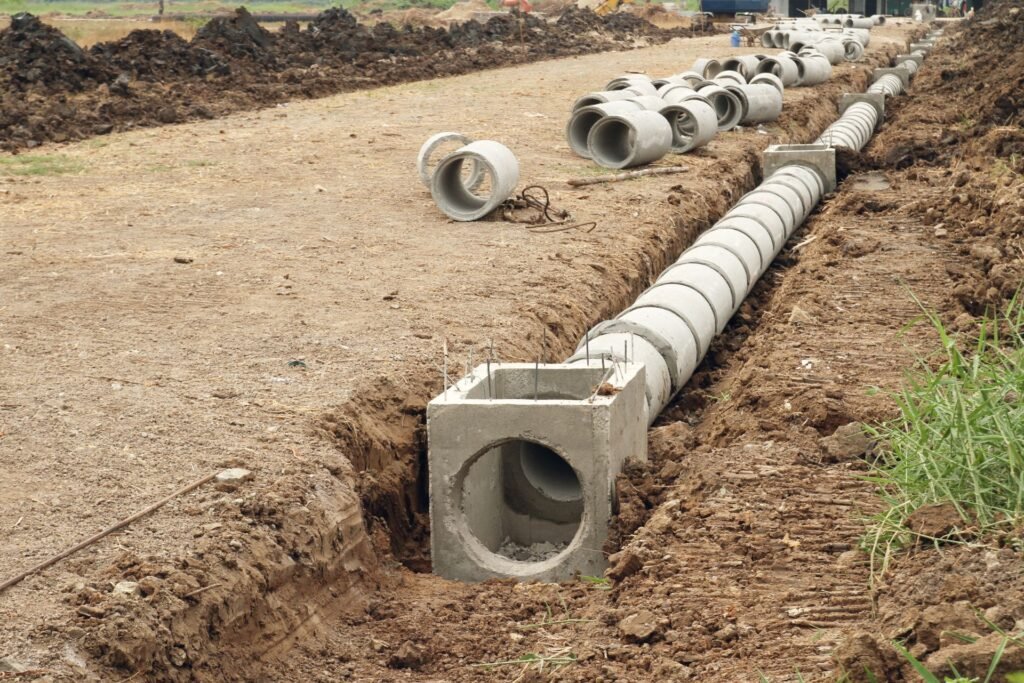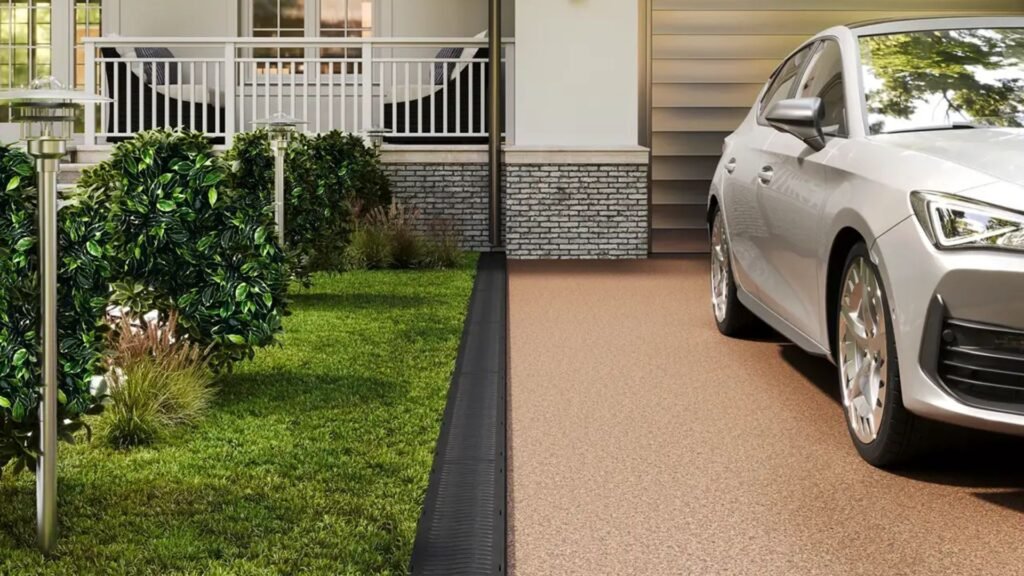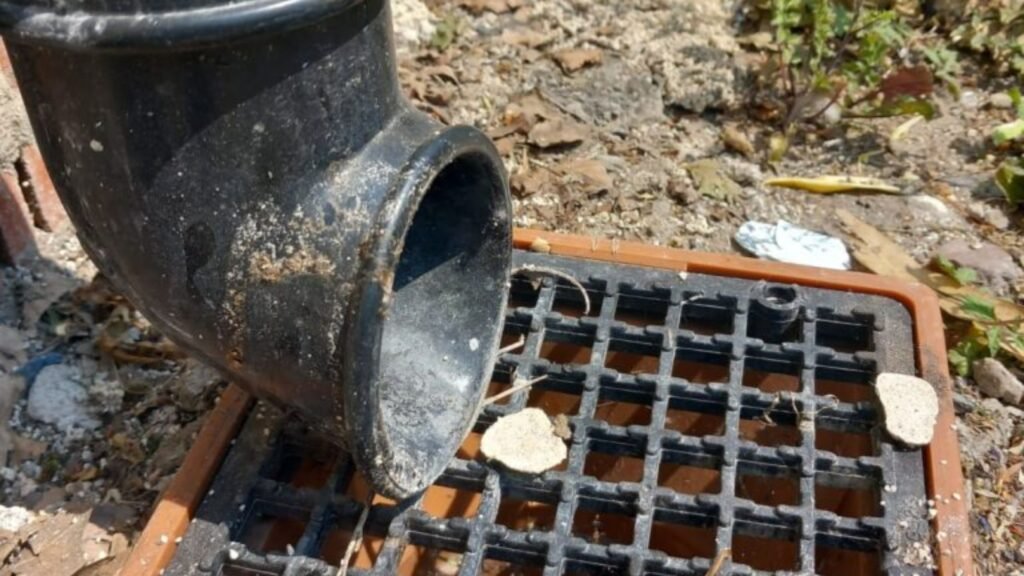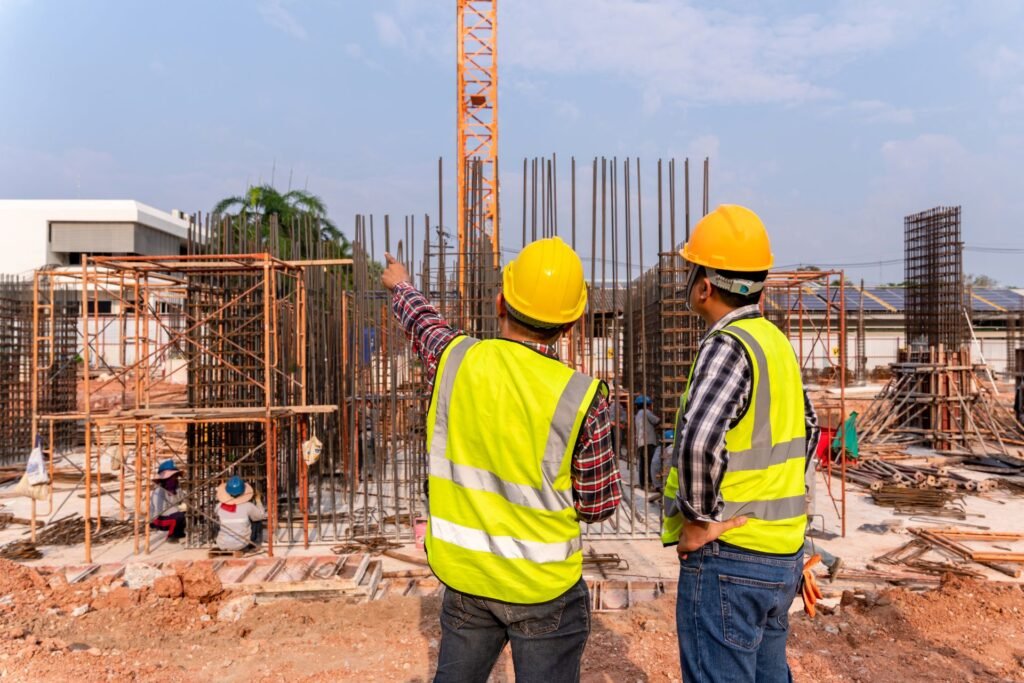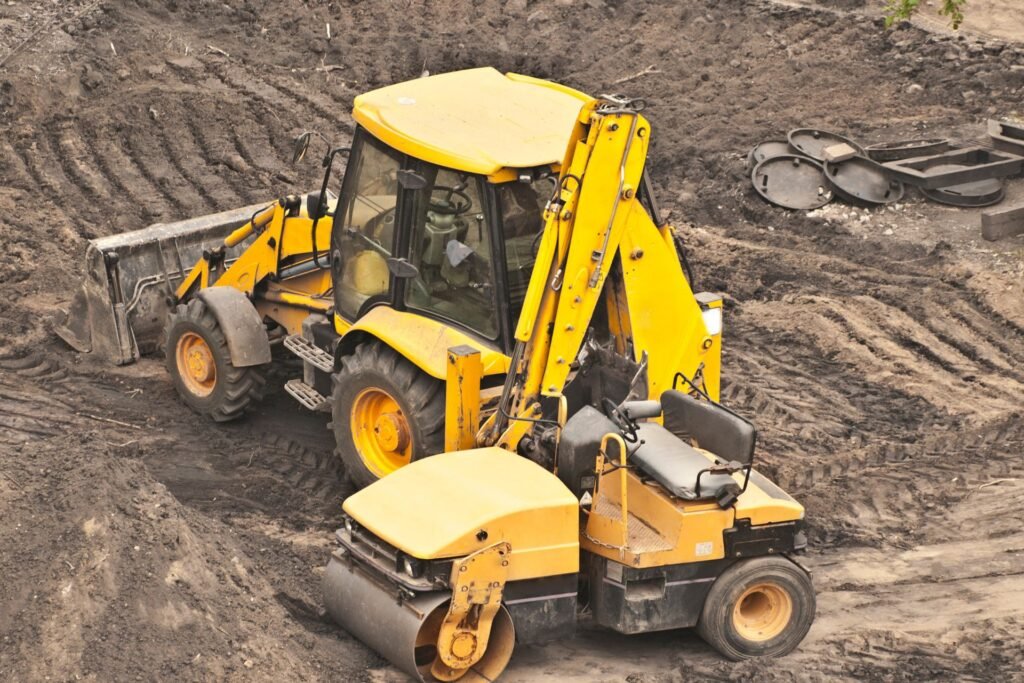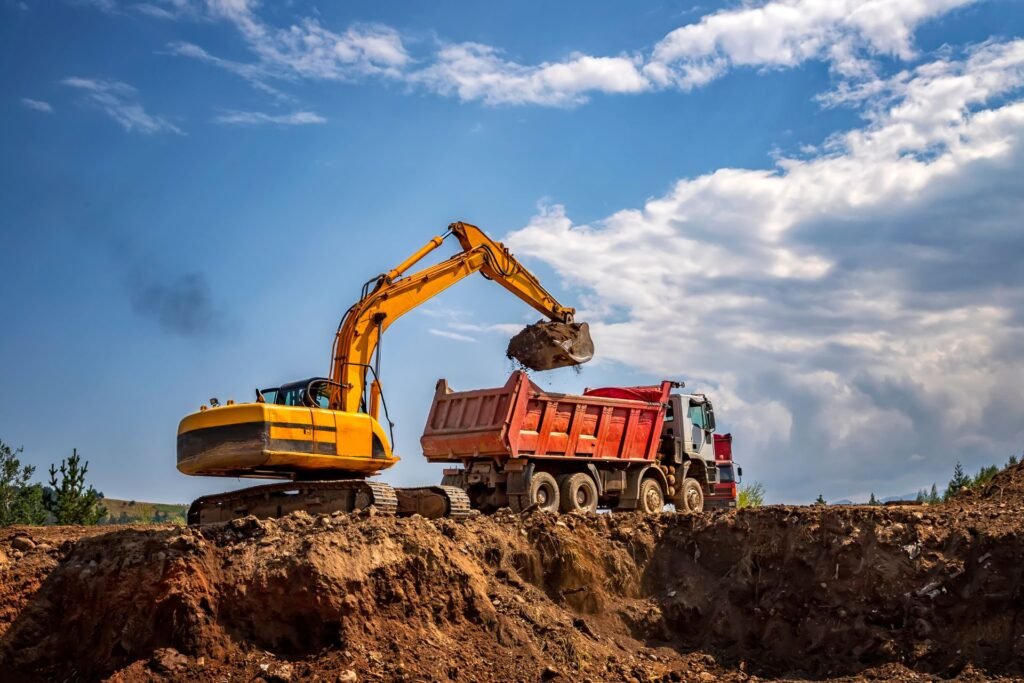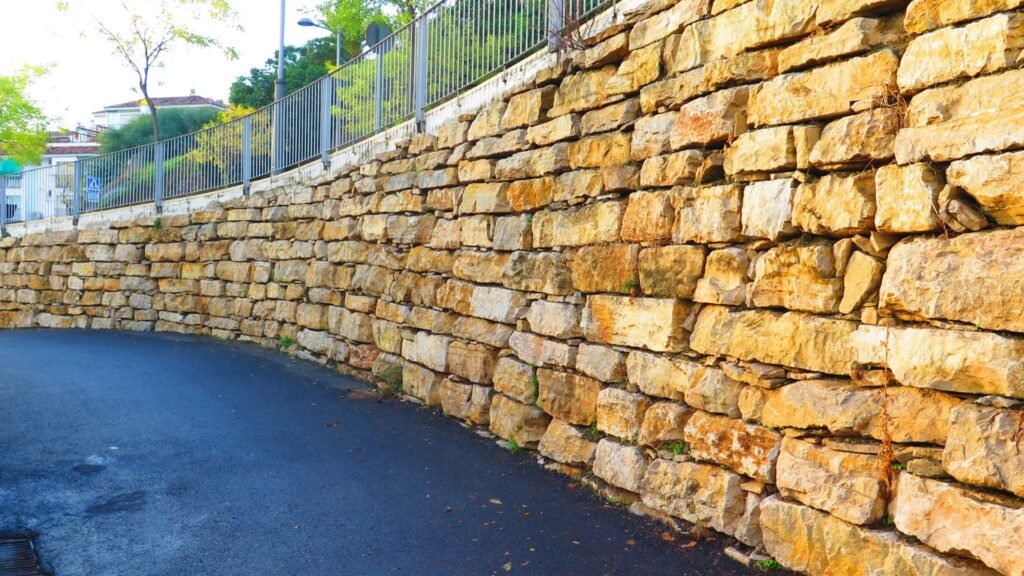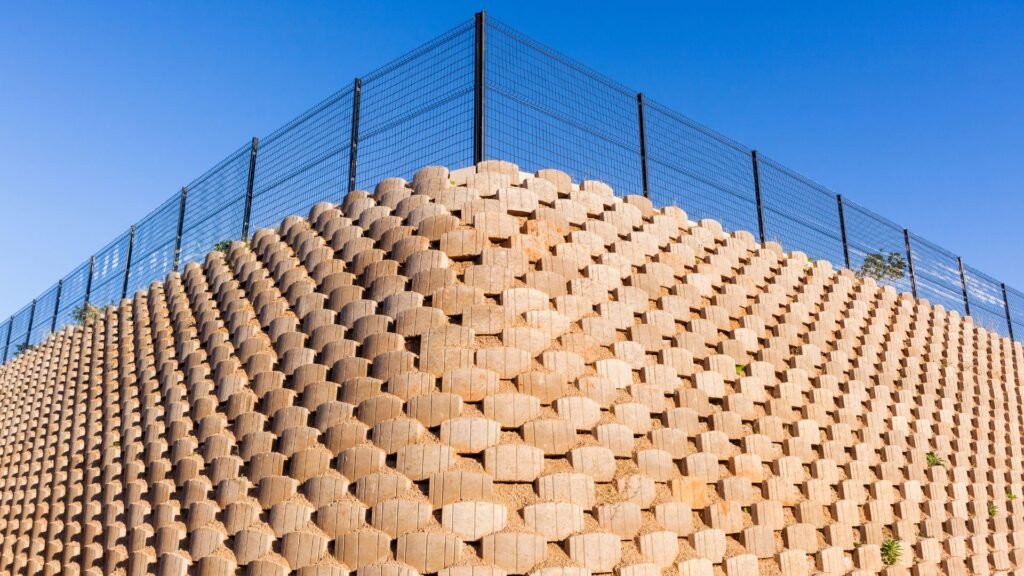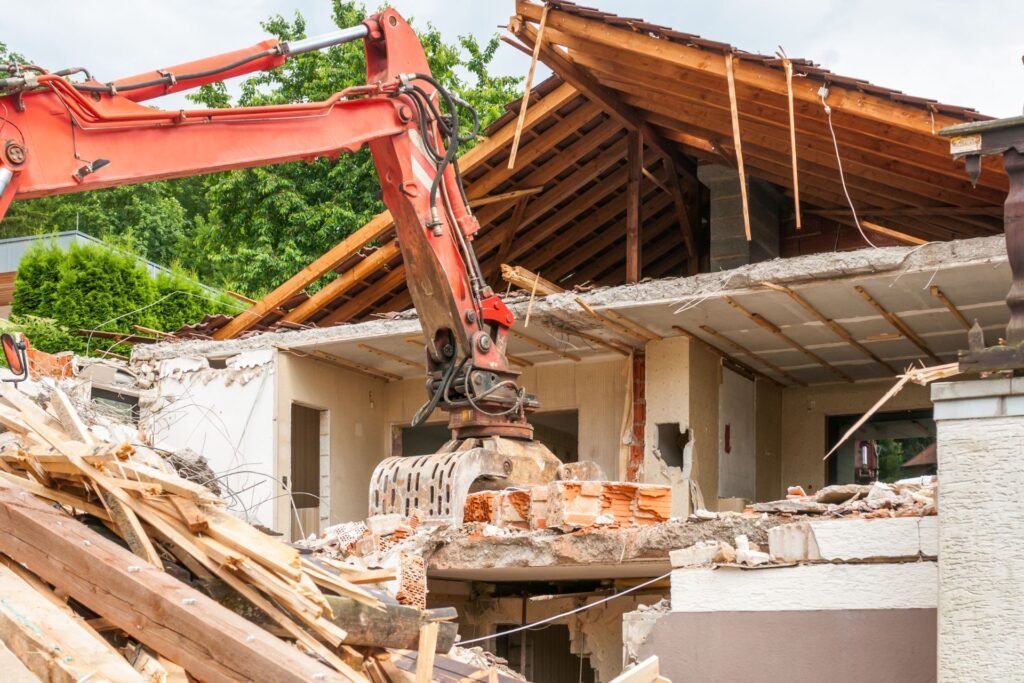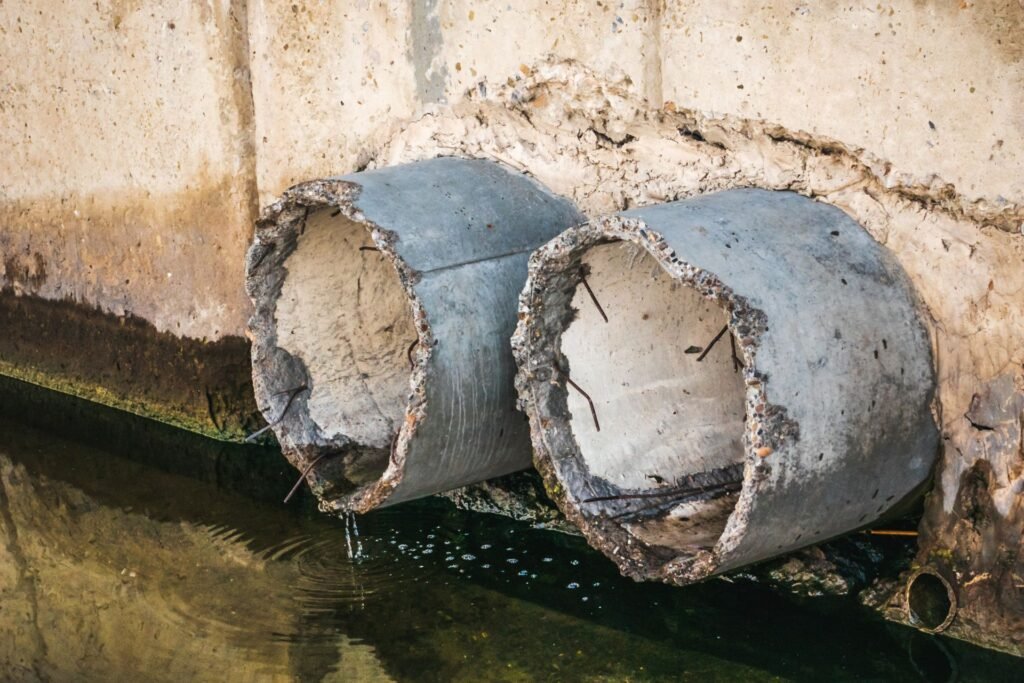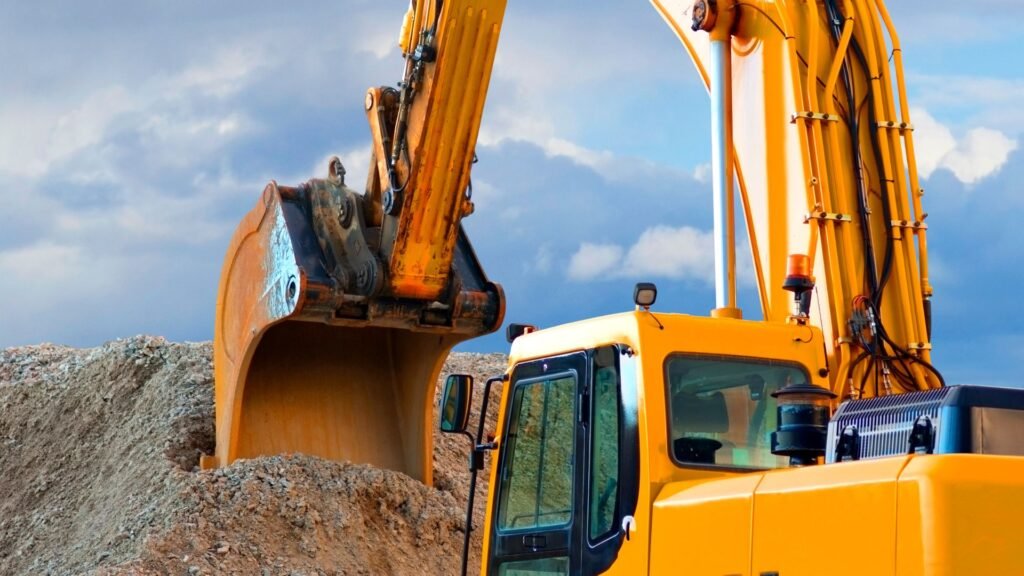Welcome to your comprehensive guide on subsoil drainage system design and installation in New Zealand! If you’ve ever struggled with waterlogged lawns, soggy gardens, or damp patches around your property, you’re not alone—our unique climate, with its regular heavy rainfall, makes proper drainage essential for maintaining the health and safety of homes and landscapes alike. In this guide, we’ll explore what subsoil drainage systems are, why they are crucial for preventing water damage and soil erosion, and how you can effectively design and install one that suits your property. Whether you’re a homeowner looking to improve your garden’s drainage or someone interested in learning more about water management solutions, this article will provide everything you need to know to keep your property dry, safe, and thriving.
A subsoil drainage system in New Zealand is a below-ground solution designed to remove excess water from the soil, preventing waterlogging and protecting property foundations. Typically composed of perforated pipes, gravel, and filter fabric, these systems redirect groundwater away from homes and gardens, ensuring stability and reducing the risk of erosion and flooding. Proper installation and maintenance of subsoil drainage systems are essential for managing New Zealand’s high rainfall, promoting healthy landscapes, and preserving property value.
Table of Contents
What Is A Subsoil Drainage System?
Definition
A subsoil drainage system is an underground infrastructure designed to manage and remove excess groundwater from beneath the earth’s surface. This system plays a crucial role in preventing waterlogging by channeling water away from areas prone to excess moisture. Unlike surface drainage, which deals with visible water, subsoil drainage operates below the ground, targeting water accumulation within the soil. By controlling the groundwater levels, subsoil drainage helps protect the structural integrity of buildings, reduce soil erosion, and improve the usability of land for agricultural and residential purposes. Essentially, it ensures that water is properly directed away from foundations, gardens, and other vulnerable areas.
Components
A typical subsoil drainage system comprises several key components, each serving a specific function to ensure effective water management:
1. Perforated Pipes: These are usually made of plastic and are designed with small holes to allow water to seep in while preventing soil and debris from entering. The pipes are placed underground, and their perforations enable the collection and transportation of groundwater to a designated outlet.
2. Filter Material: Surrounding the perforated pipes, filter material such as geotextile fabric is used to prevent soil particles from clogging the system. This layer allows water to pass through while keeping the pipes clear of blockages.
3. Gravel or Aggregate: Coarse gravel or crushed stone is typically placed around the pipes and filter material. This acts as a conduit for water, helping it move more freely toward the pipes, while also providing stability to the drainage system.
4. Outlets: The water collected by the subsoil drainage system needs to be directed somewhere, usually toward a stormwater drain, natural watercourse, or a specifically designed soakaway. Outlets ensure that the water is safely discharged away from the property or land area.
Common Uses
Subsoil drainage systems are versatile and can be found in various settings where groundwater management is necessary. Some of the most common applications include:
- Residential Properties: In residential areas, subsoil drainage is often installed to protect foundations and basements from water damage. It can also be used to maintain drier garden areas, improving the longevity of landscaping efforts.
- Agricultural Land: Farmers use subsoil drainage systems to ensure that crops are not adversely affected by overly wet soil conditions. Proper drainage promotes healthier soil structure and can enhance crop yield by preventing root rot and other moisture-related problems.
- Public Spaces: Subsoil drainage is commonly used in public spaces like parks, sports fields, and golf courses. In these areas, proper drainage is essential to maintaining the usability of the land, especially after heavy rains. The system helps avoid water pooling, which can cause flooding or damage to recreational areas.
Importance in New Zealand
Subsoil drainage systems are particularly significant in New Zealand due to the country’s unique climatic and geographical conditions. With its high rainfall, especially in regions like the West Coast, effective groundwater management is essential to prevent waterlogging and associated issues. Furthermore, New Zealand’s varied landscapes, from rolling hills to flat farmlands, create diverse drainage challenges that are best managed with well-designed subsoil drainage systems.
In addition to the frequent rainfall, many parts of New Zealand experience clay-heavy soils, which are prone to water retention and can exacerbate drainage problems. The proper installation of subsoil drainage systems ensures that these soils remain healthy and stable, promoting both agricultural productivity and the structural safety of buildings. Whether in rural or urban settings, these systems are crucial to maintaining a balance between development and nature in New Zealand’s ever-changing environment.
By understanding how subsoil drainage systems work and where they are used, it becomes clear that they are an integral part of managing water flow and ensuring the safety and usability of land across various applications. In New Zealand, their importance cannot be overstated due to the country’s propensity for high rainfall and its diverse, often challenging, landscapes.

Signs You Need A Subsoil Drainage System
Proper drainage is a crucial aspect of maintaining the health and stability of your property. Without it, water can accumulate and cause a range of issues that may lead to extensive damage over time. Below, we’ll guide you through the common signs that indicate your property might need a subsoil drainage system, the risks of ignoring these issues, and how you can assess your property for potential drainage problems.
Waterlogging Symptoms
One of the clearest signs that your property may require a subsoil drainage system is waterlogging. This occurs when water is unable to drain away properly, leaving your lawn soggy and waterlogged after even moderate rainfall. You might notice persistent puddles forming in low-lying areas, or worse, water pooling around the foundation of your home. These signs suggest that the soil is saturated and unable to absorb additional water, which can lead to further complications if not addressed promptly.
Other waterlogging symptoms include muddy patches that never seem to dry out, dying grass or plants due to oversaturation, and a general feeling of dampness in areas that should normally be dry. If your lawn squelches underfoot, or if you constantly battle puddles that linger for days, these are red flags that your property’s drainage system isn’t functioning properly.
Consequences of Poor Drainage
Ignoring poor drainage issues can result in serious consequences for your property. Over time, stagnant water can lead to soil erosion, where the top layer of soil is washed away, undermining the stability of your landscaping and the structure of your home. Foundation damage is a significant risk, as water seeping into the ground can weaken the soil supporting your home. This may cause cracks in the foundation, leading to costly repairs down the line.
Additionally, standing water can suffocate plants by drowning their roots, causing them to die off and leaving your yard barren. Beyond the aesthetic damage, the damp conditions can also attract pests like mosquitoes, which thrive in stagnant water. The longer these issues go unresolved, the more likely it is that long-term property damage will occur, potentially diminishing the value of your home.
Assessing Your Property
Wondering if your property is suffering from poor drainage? Here’s a simple checklist to help you assess whether you need professional help with installing a subsoil drainage system:
1. Inspect your lawn after rainfall: Are there areas where water pools for more than 24 hours? This is a sign that the soil isn’t draining properly.
2. Check your foundation: Look for cracks, damp spots, or any sign of water damage around the base of your home. This could indicate that water is accumulating underground.
3. Evaluate plant health: Are certain plants in your yard struggling to survive? Waterlogged roots could be the culprit.
4. Walk across your yard: Do certain areas feel soft or soggy, even days after the last rainfall? This indicates poor drainage.
5. Observe nearby landscaping: Are there visible signs of soil erosion, such as bare patches of earth or exposed roots? Water may be flowing across the surface instead of soaking into the ground.
If you notice one or more of these warning signs, it’s essential to address the issue before it worsens. A subsoil drainage system can help redirect excess water away from your home’s foundation and landscaping, protecting your property from further damage.
By understanding the signs of waterlogging and the risks of poor drainage, you can take proactive steps to safeguard your property. Don’t wait until the damage is severe—if you’re seeing the warning signs, consider contacting a professional to evaluate your drainage system and recommend the best course of action.

Designing A Subsoil Drainage System
Designing an effective subsoil drainage system requires careful consideration of several environmental and structural factors. This process is particularly crucial in areas prone to waterlogging, such as New Zealand, where the combination of diverse soil types and fluctuating weather patterns can significantly impact drainage efficiency. In this guide, we’ll explore the pre-design considerations, basic design principles, and provide an example to help you create an optimized subsoil drainage system for residential properties in New Zealand.
Pre-Design Considerations
Before you start designing a subsoil drainage system, you need to evaluate several key factors that influence the overall performance of the system:
1. Soil Type
The type of soil on the property plays a significant role in determining drainage capacity. For instance:
- Clay Soils: Clay soils have a low permeability, which means water tends to sit on the surface for longer periods. This can lead to waterlogging if the drainage system is not adequately designed.
- Sandy Soils: Sandy soils allow water to pass through quickly due to their loose structure, but they may require specific drainage solutions to prevent excessive water loss.
- Loam Soils: Loam is often considered ideal as it balances moisture retention and drainage. However, even with loam, careful planning is needed to avoid oversaturation.
Understanding the soil type helps in selecting appropriate materials and determining the layout of the drainage system.
2. Slope of the Land
The natural slope of the land is crucial in designing subsoil drainage. Water naturally flows from higher elevations to lower ones, so understanding the land’s topography allows you to strategically place drainage pipes and trenches. On sloped land, drains should be positioned to collect and direct water flow away from structures and toward designated outlets. Conversely, on flatter land, additional measures may be needed to encourage water movement, such as installing pumps or increasing trench depth.
3. Climate Factors
New Zealand’s varied climate, including regions with heavy rainfall, necessitates considering local weather patterns. Rainfall data specific to the location helps determine the volume of water that the system must handle. This data is essential for ensuring the drainage system can cope with intense rainfall events without becoming overwhelmed, leading to waterlogging or flooding.
4. Regulations
Every drainage system design must comply with local regulations. In New Zealand, councils often have specific guidelines regarding subsoil drainage to ensure that water runoff does not negatively affect neighboring properties or the environment. These regulations may include stipulations on the types of materials used, allowable discharge points, and overall system design. It is essential to consult your local council’s rules and obtain necessary permits before starting the design process.
Basic Design Principles
Once you have assessed the pre-design considerations, the next step is to apply basic design principles that ensure the drainage system will be effective in managing water flow.
1. Pipe Layout
The layout of drainage pipes should be planned to maximize water collection and distribution. Typically, perforated pipes are placed in trenches beneath the ground to collect subsurface water and direct it away from the property. Pipes should be arranged in a herringbone or grid pattern to ensure comprehensive coverage, especially in areas prone to water accumulation. Proper pipe placement helps prevent water from pooling in specific areas, protecting the property’s foundation and reducing the risk of surface flooding.
2. Depth and Width of Trenches
The dimensions of the trenches are critical for the effectiveness of the drainage system. Trenches should be deep enough to collect water from the subsurface while maintaining a slight slope to encourage water flow towards the drainage outlet. As a general guideline, trenches for subsoil drainage should be between 600mm and 900mm deep and at least 300mm wide. These measurements may vary depending on the soil type and the volume of water the system needs to manage.
3. Gravel and Filter Materials
The use of gravel and filter materials is crucial for preventing blockages and promoting efficient water flow. Gravel is typically placed around the drainage pipes to create a porous layer that allows water to flow freely into the pipes while filtering out larger particles that could clog the system. A geotextile fabric is often wrapped around the pipes or laid in the trench to prevent fine soil particles from entering the drainage system, further reducing the risk of blockages.
Case Study: A Typical Subsoil Drainage System in New Zealand
Let’s consider an example of a subsoil drainage system designed for a residential property in New Zealand. Imagine a property with a flat lawn in the front and a sloped garden in the back.
Flat Lawn
For the flat lawn, drainage pipes are installed in a grid pattern beneath the surface, with trenches dug at a depth of 700mm. The pipes are surrounded by coarse gravel to facilitate water flow, and geotextile fabric is used to prevent soil infiltration. Due to the lack of slope, the system includes a sump pump to actively direct water toward the stormwater system.
Sloped Garden
In the sloped garden, the natural gradient aids water flow. Here, the drainage pipes are arranged in a herringbone pattern, with trenches dug to a depth of 600mm at the top of the slope and gradually increasing to 800mm toward the bottom. Gravel and geotextile fabric are used as in the flat lawn example, but no pump is required since gravity aids water movement. The collected water is channeled to an existing drainage outlet at the bottom of the slope.
In both scenarios, the drainage system ensures that water is effectively managed, preventing issues like waterlogging and erosion while protecting the property’s structures and landscape.
Designing a subsoil drainage system involves a comprehensive understanding of the property’s soil type, topography, climate, and regulatory requirements. By following these design principles and considering local factors, you can create an effective drainage system that protects your property from water-related damage. Whether you’re working with a flat lawn or a sloped garden, taking the time to plan and execute the system properly ensures long-term success in managing subsoil water.

Installing A Subsoil Drainage System
Installing a subsoil drainage system can be a crucial step in managing water buildup around your property. Excess water can lead to foundation damage, soil erosion, and even long-term structural issues. Whether you’re a DIY enthusiast or considering hiring professionals, it’s essential to understand the process, the tools required, and the associated costs. Below, we break down everything you need to know about subsoil drainage installation, from deciding who should handle the job to a comprehensive step-by-step guide.
DIY vs. Professional Installation
When deciding whether to install a subsoil drainage system yourself or hire a professional, it’s essential to weigh the complexity of the project against your skill level.
- DIY Installation: A DIY approach can save money, but it requires significant effort, precision, and knowledge of your property’s landscape. Improper installation can lead to ineffective drainage, which could cause more problems than it solves. The biggest risks include poor trench alignment, incorrect pipe placement, and inadequate filtration, all of which can compromise the system’s effectiveness.
- Professional Installation: On the other hand, hiring a professional ensures that the system is installed correctly, minimizing potential risks. Professionals typically have the experience, tools, and expertise to assess your land, determine the optimal system design, and install it efficiently. While this option comes at a higher cost, it provides peace of mind and long-term reliability, especially for more complicated or large-scale installations.
Step-by-Step Installation Process
For those who opt for a DIY project, here’s a detailed step-by-step guide to help you through the installation of a subsoil drainage system.
Step 1: Planning and Marking the Site
The success of your subsoil drainage system starts with careful planning. Begin by evaluating the areas where water tends to accumulate. You’ll want to map out where the pipes and trenches will go. Make sure to identify the lowest point in your yard, as this will be the drainage outlet. Use stakes and string to mark your trenches, ensuring the layout provides a natural flow for water to exit the property.
Step 2: Digging Trenches
Once your layout is finalized, it’s time to dig the trenches. The depth and slope of the trench are crucial to the system’s success. Typically, trenches should be about 12 to 18 inches deep, but this can vary depending on soil type and drainage needs. Ensure that the trench has a consistent slope of about 1 inch for every 8 feet to promote water flow towards the outlet. Use a spirit level to check the slope as you dig.
Step 3: Laying Pipes
After digging, you can start laying your perforated pipes. These pipes allow water to enter and flow through the system, so placement is critical. Lay the pipes with the perforations facing downward to maximize water absorption from the surrounding soil. Ensure that the pipes are evenly spaced and aligned with the trench’s slope to facilitate smooth water flow.
Step 4: Adding Filter Materials
To prevent clogs and maintain the system’s efficiency, you’ll need to add filter materials. Start by adding a layer of gravel at the bottom of the trench. Next, wrap the perforated pipe in a geotextile filter fabric. This fabric keeps dirt and debris from clogging the pipe while allowing water to flow through. Finally, cover the pipe with more gravel, ensuring the entire trench is filled just below the surface.
Step 5: Backfilling and Final Adjustments
Once the filter materials are in place, backfill the trench with soil. Be sure to compact the soil slightly to prevent settling over time but avoid compacting it too tightly, as this could interfere with water flow. After backfilling, double-check the system by running water through the area to ensure it’s draining correctly. Make any necessary adjustments, such as regrading the soil surface or adjusting the pipe slope, before finishing the project.
Tools and Materials Needed
Here’s a list of tools and materials you’ll need to install your subsoil drainage system:
- Shovel or Trencher: For digging trenches.
- Spirit Level: To ensure proper slope.
- Perforated Pipes: Typically made of PVC or flexible corrugated plastic.
- Gravel: Coarse gravel for pipe bedding and backfill.
- Geotextile Filter Fabric: To wrap around the pipes and prevent clogs.
- Stakes and String: For marking your trench layout.
- Backfill Soil: To cover the trenches after laying the pipes.
These tools and materials are widely available at most home improvement stores and can be easily acquired for a DIY project.
Cost Overview
The cost of installing a subsoil drainage system can vary depending on whether you go the DIY route or hire professionals.
- DIY Cost Estimate: For a DIY installation, expect to spend between $500 to $1,500, depending on the size of the area, the materials you use, and whether you rent equipment like a trencher. The largest expenses typically include the perforated pipe, gravel, and any rental fees for tools.
- Professional Cost Estimate: Professional installation is more expensive, with costs typically ranging from $3,000 to $8,000 or more, depending on the complexity of the system, the size of your yard, and local labor rates. This higher cost includes not only materials but also the expertise and labor required to install the system correctly and efficiently.
Installing a subsoil drainage system can be a rewarding DIY project for those with the time, tools, and skills to tackle it. However, for more complicated installations or for homeowners who prefer peace of mind, hiring a professional may be the better option. Either way, a properly installed drainage system is essential for protecting your home from water damage and ensuring your landscape remains healthy and functional for years to come.

Maintenance Tips For Subsoil Drainage Systems
Maintaining a subsoil drainage system is crucial for preventing water damage, avoiding costly repairs, and ensuring the longevity of your system. By following these practical maintenance tips, homeowners can ensure their subsoil drainage system operates efficiently all year round.
Regular Inspection: Keep an Eye on Your System
Regular inspections are vital to detect issues before they escalate into costly problems. It is recommended that homeowners inspect their subsoil drainage system at least twice a year, with additional checks after heavy rainfall. Pay close attention to any areas where water pools or drains slowly, as these could indicate a blockage or system failure. Walk along the drainage lines, looking for any signs of erosion, wet spots, or collapsed areas. Regular inspection helps you identify potential issues early, preventing bigger problems down the road.
Common Issues and Simple Solutions
Subsoil drainage systems are often susceptible to several common issues, including:
- Pipe Blockages: Debris such as leaves, soil, or other organic materials can clog your drainage pipes. To solve this, use a drain snake or a high-pressure water jet to clear blockages and ensure water flows freely.
- Sediment Buildup: Over time, fine particles like silt and sand may accumulate within the pipes, restricting water flow. Flushing the system with water can help remove sediment, or consider installing a filter fabric around the drainage pipe to reduce this issue.
- Plant Root Intrusion: Tree or shrub roots seeking moisture can penetrate pipes, causing blockages or even damaging the system. Prevent this by regularly trimming back plants near your drainage system, or if roots are already inside the pipes, consult a professional who can use specialized equipment to remove them.
By addressing these common problems promptly, you’ll extend the life of your system and prevent water from seeping into unwanted areas of your property.
Seasonal Maintenance: Prepare for NZ’s Wetter Months
New Zealand’s wetter months can put extra strain on subsoil drainage systems, making seasonal maintenance even more important. As the wet season approaches, clear debris from around drainage grates and outlets to prevent blockages. Ensure that gutters and downspouts are directing water away from your home’s foundation and toward your subsoil drainage system. During the dry season, take the opportunity to flush the system and check for any cracks or leaks in the pipes, ensuring that your system is ready to handle increased water volumes in the coming months. A little seasonal preparation can go a long way in preventing water damage and maintaining the efficiency of your drainage system year-round.
When to Call a Professional
While regular inspections and DIY fixes can address many common issues, there are times when professional intervention is necessary. Call a professional if you notice persistent drainage problems, such as water pooling in the same spots after heavy rain, or if your pipes have suffered extensive damage. Professionals have the tools and expertise to diagnose complex issues, such as collapsed pipes, significant root intrusion, or full-scale blockages that are beyond the scope of household equipment. Additionally, if your system requires any significant repairs or upgrades, such as replacing damaged sections or installing new components, a professional will ensure the work is done to a high standard, protecting your home from future water damage.
By staying on top of maintenance and knowing when to seek professional help, you’ll ensure that your subsoil drainage system remains effective for years to come, safeguarding your property against water-related issues.

Benefits Of Installing A Subsoil Drainage System In NZ
Installing a subsoil drainage system in New Zealand offers a wide range of long-term benefits, making it an essential investment for homeowners and property developers. The unique weather patterns and soil conditions in New Zealand, particularly the frequency of rainfall, make drainage systems a crucial part of maintaining property integrity, garden health, and environmental sustainability. Let’s dive into how installing a subsoil drainage system can provide substantial advantages.
Protecting Property Value
One of the most compelling reasons to install a subsoil drainage system is to protect your property’s value. Water damage can be insidious, slowly eroding the foundation of your home and causing significant structural problems over time. This type of damage, if left unchecked, can lead to costly repairs that could have been easily avoided with proper drainage. A well-designed drainage system channels excess water away from your home, preventing issues like basement flooding, foundation shifts, and mold growth. For homeowners in New Zealand, where heavy rainfall is common, investing in a subsoil drainage system ensures that your property remains in prime condition, safeguarding its value in the long term.
Improving Garden Health
For gardening enthusiasts and landscapers, subsoil drainage is a game-changer. Excess water pooling in your garden can lead to waterlogged soil, which suffocates plant roots and causes root rot. This can severely damage your plants, trees, and lawns. Installing a subsoil drainage system helps regulate the moisture levels in your garden, allowing water to flow away from the surface and maintaining healthier soil conditions. With proper drainage, your plants have the ideal environment to thrive, leading to more vibrant gardens and robust landscaping. In New Zealand’s diverse climate, where some regions may experience frequent rain while others are more prone to dry spells, balanced soil moisture levels are key to successful gardening.
Reducing Flooding Risk
Localized flooding is a common issue during New Zealand’s rainy seasons, particularly in areas with poor drainage systems. Subsoil drainage systems help mitigate this risk by effectively redirecting excess water away from your property. When rain falls heavily, the ground can quickly become saturated, leading to water pooling on the surface. This increases the chances of flooding around your home or garden, potentially causing damage to the landscape and outdoor structures. By installing a subsoil drainage system, you can significantly reduce the risk of flooding by ensuring that water drains efficiently, even during the heaviest downpours.
Environmental Benefits
Beyond the immediate benefits to your property and garden, subsoil drainage systems also contribute positively to the environment. Proper water management through drainage systems helps reduce soil erosion, which is a common problem when water runoff is uncontrolled. Erosion can strip away the nutrient-rich topsoil, degrading the land and leading to sediment buildup in natural waterways. By preventing excessive water accumulation, subsoil drainage helps protect the surrounding ecosystem and maintains the integrity of natural water systems, such as rivers and streams. Additionally, well-managed water flow reduces the chances of pollutants being carried into these natural systems, supporting cleaner and healthier environments.
In summary, installing a subsoil drainage system in New Zealand offers multiple benefits. From preserving property value and enhancing garden health to reducing flood risks and providing environmental advantages, proper drainage is crucial for any property owner. Given New Zealand’s variable and often rainy climate, having a reliable drainage system in place is not just a luxury—it’s a necessity that can save homeowners significant time, money, and hassle in the long run.
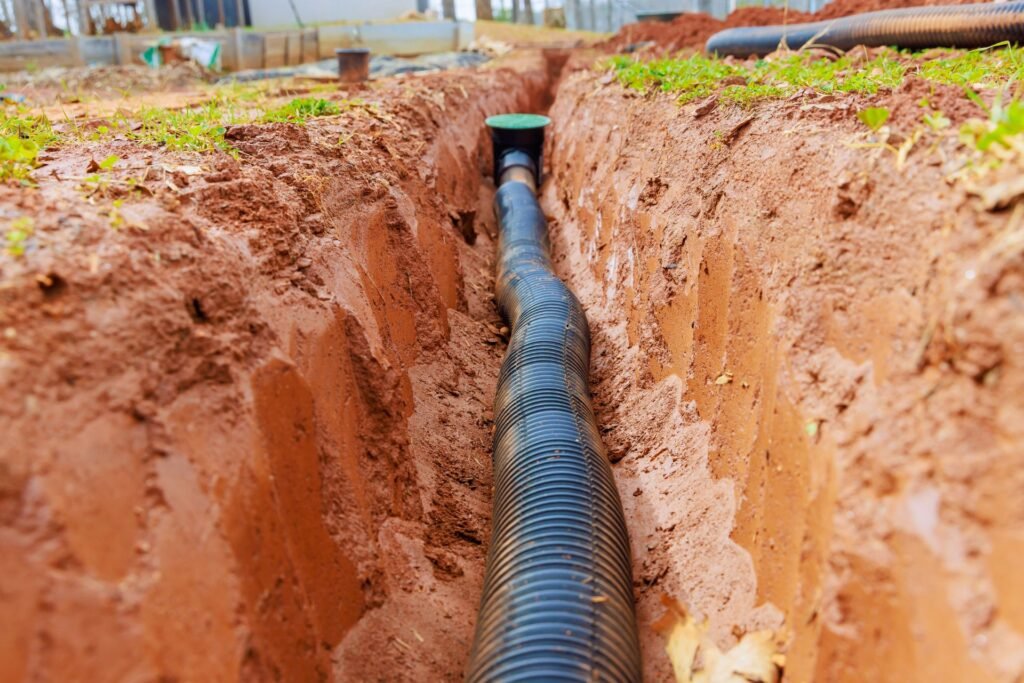
FAQs: About Subsoil Drainage System Design And Installation NZ
What is a subsoil drainage system, and how does it work?
A subsoil drainage system is a below-ground solution that removes excess water from the soil by collecting it through perforated pipes and redirecting it away from your property. The system helps prevent waterlogging, soil erosion, and foundation damage by ensuring proper water management.
Why is subsoil drainage important in New Zealand?
New Zealand’s climate, characterized by frequent and sometimes heavy rainfall, can cause significant water accumulation in the soil. Without proper drainage, this can lead to soggy lawns, flooding, and damage to buildings and landscapes. Subsoil drainage systems help manage this water effectively, reducing the risk of such issues.
What are the signs that my property needs a subsoil drainage system?
Common signs include persistent puddles, soggy patches of grass, water pooling near the foundation, damp basements, or slow drainage after rain. If you notice any of these issues, it may be time to consider installing a subsoil drainage system.
Can I install a subsoil drainage system myself, or should I hire a professional?
While it’s possible to install a subsoil drainage system as a DIY project, it requires careful planning, the right tools, and an understanding of your property’s soil and slope. Hiring a professional ensures the system is properly designed and installed, reducing the risk of future issues.
How do I design a subsoil drainage system for my property?
The design of a subsoil drainage system depends on factors like soil type, the slope of the land, and local rainfall patterns. It involves planning the layout of the drainage pipes, determining the depth and width of trenches, and choosing appropriate materials like gravel and filter fabric to ensure efficient water flow.
What materials do I need to install a subsoil drainage system?
You will need perforated drainage pipes, gravel, filter fabric, a trenching tool, and potentially other items like connectors or pipe outlets depending on your specific design. Having the right materials is key to ensuring the system works effectively.
How much does it cost to install a subsoil drainage system in NZ?
Costs can vary depending on the size of your property, the complexity of the system, and whether you opt for professional installation. A typical DIY installation might range from $500 to $2000 NZD, while professional services can cost more depending on labor and materials.
How do I maintain a subsoil drainage system?
Regular inspections are crucial, especially after heavy rain. Check for blockages, sediment buildup, or damage to the pipes. You may need to clean or flush the system occasionally to ensure it continues functioning effectively. Seasonal maintenance, particularly in wetter months, is also recommended.
What are the benefits of a subsoil drainage system for homeowners?
A subsoil drainage system helps protect your home and landscape by preventing waterlogging, foundation damage, and soil erosion. It also promotes healthier gardens by ensuring proper soil moisture levels, which is especially beneficial in areas with heavy rainfall like New Zealand.
Are there any regulations in NZ for installing subsoil drainage systems?
Yes, some local councils in New Zealand may have regulations regarding the installation of subsoil drainage systems, particularly in relation to water runoff management. It’s advisable to check with your local council for any specific rules or requirements before starting your installation.
Conclusion
In conclusion, having a well-functioning subsoil drainage system is essential for protecting properties and optimizing land use in New Zealand. Whether you’re dealing with excess water from heavy rainfall or managing the unique challenges of New Zealand’s diverse landscapes, a reliable drainage system helps prevent damage, increase property value, and ensure long-term stability. It’s important to assess your drainage needs and consider professional installation or DIY solutions to safeguard your property. Taking proactive steps now will bring peace of mind, knowing your land is protected and set up for success in the years to come.
About the Author:
Mike Veail is a recognized digital marketing expert with over 6 years of experience in helping tradespeople and small businesses thrive online. A former quantity surveyor, Mike combines deep industry knowledge with hands-on expertise in SEO and Google Ads. His marketing strategies are tailored to the specific needs of the trades sector, helping businesses increase visibility and generate more leads through proven, ethical methods.
Mike has successfully partnered with numerous companies, establishing a track record of delivering measurable results. His work has been featured across various platforms that showcase his expertise in lead generation and online marketing for the trades sector.
Learn more about Mike's experience and services at https://theleadguy.online or follow him on social media:
